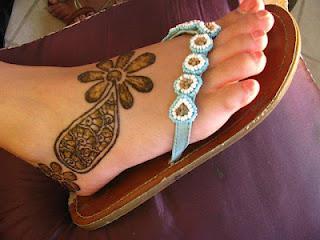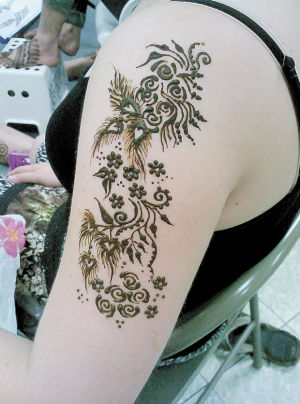Unique Henna Designs Biography
Source(Google.com.pk)Unique style tends to be less detailed and intricate. its still very beautiful. Instead of having fill-ins it is just colored in boldly. Arbi designs don’t necessarily cover your hands or feet all the way. Many popular Arabic mehndi designs are vines and leaves with beautiful flowers. This makes it an excellent and perfect candidate, if you want to have a bail going down your arm or leg.
Party is the best function that you can save the design for your occasion. Wedding is the important day in our life. So we have to choose the different types of wedding style during the designs and according to the dress and make. It can be more attractive and beautiful by using the stones and beads in it. This is good choice for you
This Unique Henna Designs Hand Designs Art Lesson shows you how to create a unique and unusual self-portrait of your hands! It's a great art project for kids, because it allows them to learn about:ther culturesthe role of pattern in abstract arthow to create abstract patternshow to express themselves in a symbolic way
It's also a fun art project for adults for the exact same reasons!
First I'll give you a bit of background info about henna, and then launch into the art project.
To create a dye for the skin, the henna plant is grounded into a paste with a few other ingredients, which is then applied to the body using a cone-shaped funnel. The henna must stay undisturbed on the skin for several hours to properly stain the skin, and then it is washed off. Henna designs can last for days or months.
In India, henna designs on skin are called mehndi.n many cultures, women have henna decorations applied to their hands and feet for festivals and celebrations. Before a wedding, a bride will have elaborate henna designs drawn onto her hands, arms and sometimes feet. In some regions, the groom will be decorated as well.
Henna decorations have also become popular in the United States, Canada, Europe and Australia, where it takes the form of a "temporary tattoo".Henna Hand Designs Art Project
In this art project, you'll trace an outline of your hand(s) onto paper and then decorate them with henna designs! This is less messy than trying to apply actual henna on your (or your students') hands, and it allows you to create something that you can keep forever.If you're a teacher, start by showing your students photos of hands decorated with henna, like the ones on this page. Give them a bit of background info about the origins of henna, as well as how and why it's used today.
The palm gives you a wide open space for creative expression.
Henna designs on the palm commonly involve an abstract design that emanates out from the center, like a mandala.To create a design like this, pinpoint the center of the palm (or close enough to the center) and start with a dot, a circle, a spiral, a flower, a star… any symbol or image that you like. Then continue adding designs that radiate out from that central point.That's one of the easiest ways to create a mandala, and they happen to look great on palms!Another idea for decorating the palm is to draw something that personally symbolizes you. It could be a particular flower, a bird, a favorite pet, or any object that describes who you are. You don't need to worry about making it look realistic, because henna designs are abstract. This is all about creative expression!
Unique Henna Designs
 |
| Unique Henna Designs |
 |
| Unique Henna Designs |
 |
| Unique Henna Designs |
 |
| Unique Henna Designs |
 |
| Unique Henna Designs |
 |
| Unique Henna Designs |
 |
| Unique Henna Designs |
 |
| Unique Henna Designs |
 |
| Unique Henna Designs |
 |
| Unique Henna Designs |
 |
| Unique Henna Designs |









































